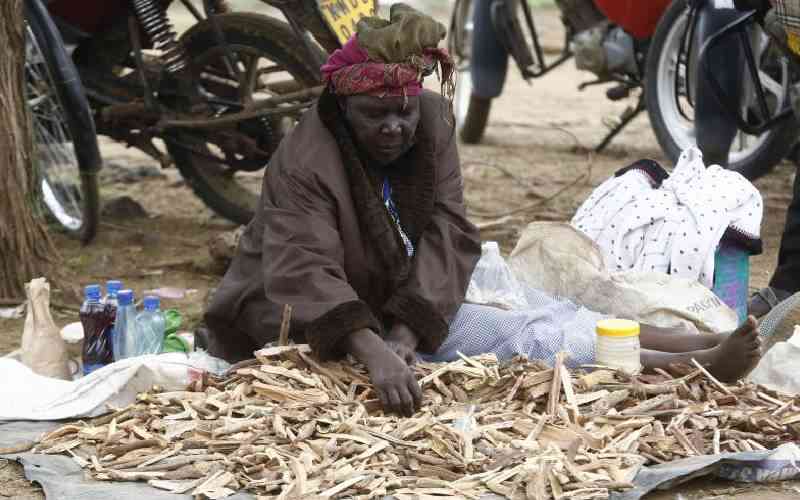
New data from the United Nations Educational Scientific and Cultural Organisation indicate that about 617 million children and adolescents worldwide cannot read proficiently nor do basic mathematics, although two-thirds of them are sitting in classrooms.
Releasing the data on January 24 to mark the first International Day of Education, Silvia Montoya, the director of UNESCO Institute for Statistics, said the problem is not an upshot of lack of innovative curricula but of inequality caused by poverty, gender, location and ethnicity.
According to Montoya, the poorest children in low-income countries are less than half likely to complete primary school as the richest children, less than a quarter as likely to complete lower secondary school, and one-tenth as likely to complete upper secondary.
Children in rural areas in such countries are twice as likely to be out of school as children living in urban areas. “Only two per cent of the poorest girls in low-income countries, especially in Sub-Saharan Africa, complete upper secondary school,” she said.
Poor vs rich
Although there had been intensified access to education at all levels in Sub-Saharan Africa in the last two decades, many children of school-age group are still out of school either because of poverty, where they live, ethnic considerations, or gender.
That is the prevailing scenario in Kenya where UNESCO says seven per cent of primary school-age group children have never been to school. The situation is skewed, with 34 per cent of children in North Eastern having never been to school, Coast (14 per cent), Rift Valley (nine per cent), Nyanza (seven per cent) and Eastern and Western at five per cent.
Only one per cent and two per cent of the group had never been to school in Central and Nairobi respectively.
However, schooling is worse among the poor as 20 per cent of school-age children from the poorest households have never been to school compared to one per cent of their counterparts from the richest households. Non-school attendance is higher in rural areas where eight per cent of children had never been to school compared to four per cent in urban areas.
However, the number of school-age children currently out of school in Kenya that include those who might have dropped out for one reason or another is at 12 per cent. According to Manos Antoninis, the director of the Global Education Monitoring Report at UNESCO, this percentage represents one million children.
In this regard 44 per cent of primary school-age children in North Eastern are currently out of school, Eastern (27 per cent), Coast (20 per cent), Rift Valley (13 per cent), Nyanza (12 per cent), Western (nine percent), Nairobi (six percent) and Central (two percent). Disparities in access to education are also higher among the poor as 28 per cent of children from the poorest households are out of school in comparison to only four per cent from the richest.
The statistics also indicate that 14 per cent of children in rural areas are still out of school as compared to seven per cent in urban areas. In terms of gender, 13 per cent of primary school-age boys are not schooling compared to 11 percent of the girls.
Basically what is emerging in many poor households is that opportunity costs for sending girls to school are much lower than for boys, especially among pastoral communities where boys are tasked to look after livestock.
Dr Kevin Watkins, a former director of UNESCO’s Educational for All Global Monitoring Report, argues that when children go to school, poor households in rural areas and urban slums in low-income countries incur more than financial costs, as they are reliant on child labour.
Stay informed. Subscribe to our newsletter
That argument seems valid in Kenya, taking into account that communities in some of the highly marginalised areas have the highest number of children out of school. According to UNESCO’s World Inequality Database on Education, children out of school among the Mbere, Rendille, Turkana, Samburu, Gabbra and Somali stand between 40 and 60 per cent while among the Luhya, Kalenjin, Meru, Kisii and Kikuyu, the figures are between two and 10 per cent.
Similarly, such indicators are reflected in primary school completion rate. Despite progress and efforts to have children in school, the primary school completion rate is currently at 84 per cent.
Nevertheless, it is highest in Central at 97 per cent but slips to 59 per cent in North Eastern and 73 per cent at the Coast. In other regions, it lies between 87 per cent and 81 per cent. Even then, primary school completion rate among children in poor households stands at a modest 63 per cent compared to 97 per cent among rich households.
The data tell a different story on claims that most of Kenya’s youth are engaged in post secondary education. Among the youth aged between 18-22 years, only 12 per cent are attending institutions of higher learning.
At 20 per cent, Nairobi has the highest number of its youth in that age bracket, followed closely by Central at 17 per cent and Rift Valley at 11 per cent. Youths from other regions lie at between 10 and seven percent.
However, the richest group is represented at 26 per cent, while only two per cent of the poorest youth in that category group are in higher education.
But what is emerging is that some communities are in danger of being marginalised further in terms of their youth getting higher education. For instance, whereas 28 per cent of that youth group among the Embu is attending institutions of higher learning, only one per cent are doing so among the Kuria, two per cent for the Samburu and three per cent among the Turkana.
Steep inequalities
Other highlighted ethnic communities include Iteso (five per cent), Kamba (eight per cent), Gabbra and Luhya (six per cent), Luo (10 per cent), Kalenjin (15 per cent) and Kisii and Kikuyu at 20 per cent respectively.
Steep inequalities exist in four-year tertiary completion rate among those aged between 25-29 years that stands less than one per cent among those from the poorest households and 13 per cent from the richest group. So far only two per cent of that age group from rural years has a four year tertiary completion rate compared to eight per cent in urban areas. Completion rate of a four-year degree among females is at four percent and six percent among men.
At regional level, Nairobi has the highest four year degree completion rate among 25-29 age groups at 10 per cent, while Eastern has the lowest at two percent.
Among the highlighted ethnic groups, completion in this age bracket stands between one percent among the Kuria and 24 per cent among the Kikuyu.
As Montoya pointed out, the database is expected to keep countries’ focused on the gaps. For Kenya, there is a question mark as to whether it is possible to achieve an inclusive and equitable education for all by 2030.
 The Standard Group Plc is a
multi-media organization with investments in media platforms spanning newspaper
print operations, television, radio broadcasting, digital and online services. The
Standard Group is recognized as a leading multi-media house in Kenya with a key
influence in matters of national and international interest.
The Standard Group Plc is a
multi-media organization with investments in media platforms spanning newspaper
print operations, television, radio broadcasting, digital and online services. The
Standard Group is recognized as a leading multi-media house in Kenya with a key
influence in matters of national and international interest.
 The Standard Group Plc is a
multi-media organization with investments in media platforms spanning newspaper
print operations, television, radio broadcasting, digital and online services. The
Standard Group is recognized as a leading multi-media house in Kenya with a key
influence in matters of national and international interest.
The Standard Group Plc is a
multi-media organization with investments in media platforms spanning newspaper
print operations, television, radio broadcasting, digital and online services. The
Standard Group is recognized as a leading multi-media house in Kenya with a key
influence in matters of national and international interest.










